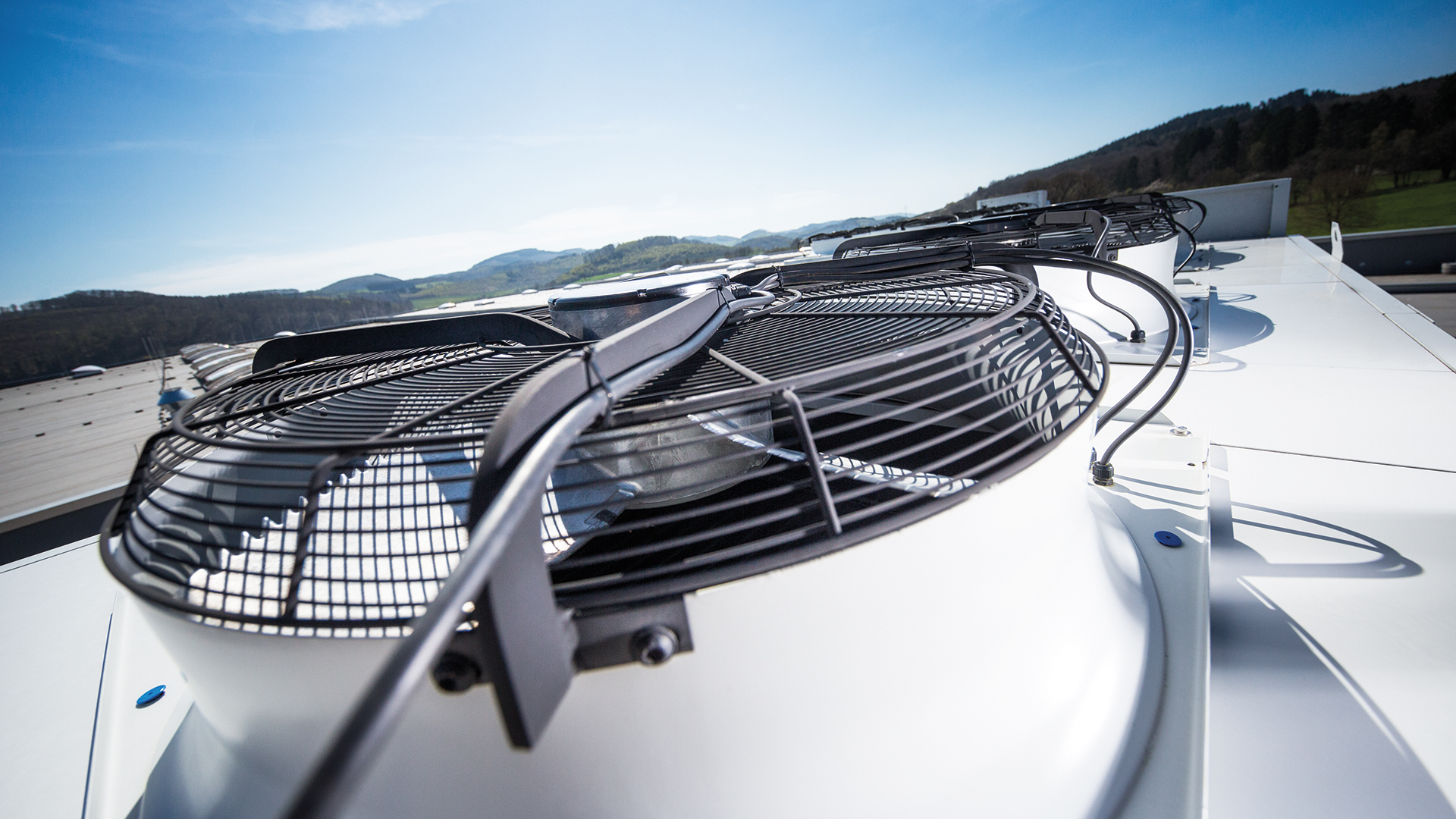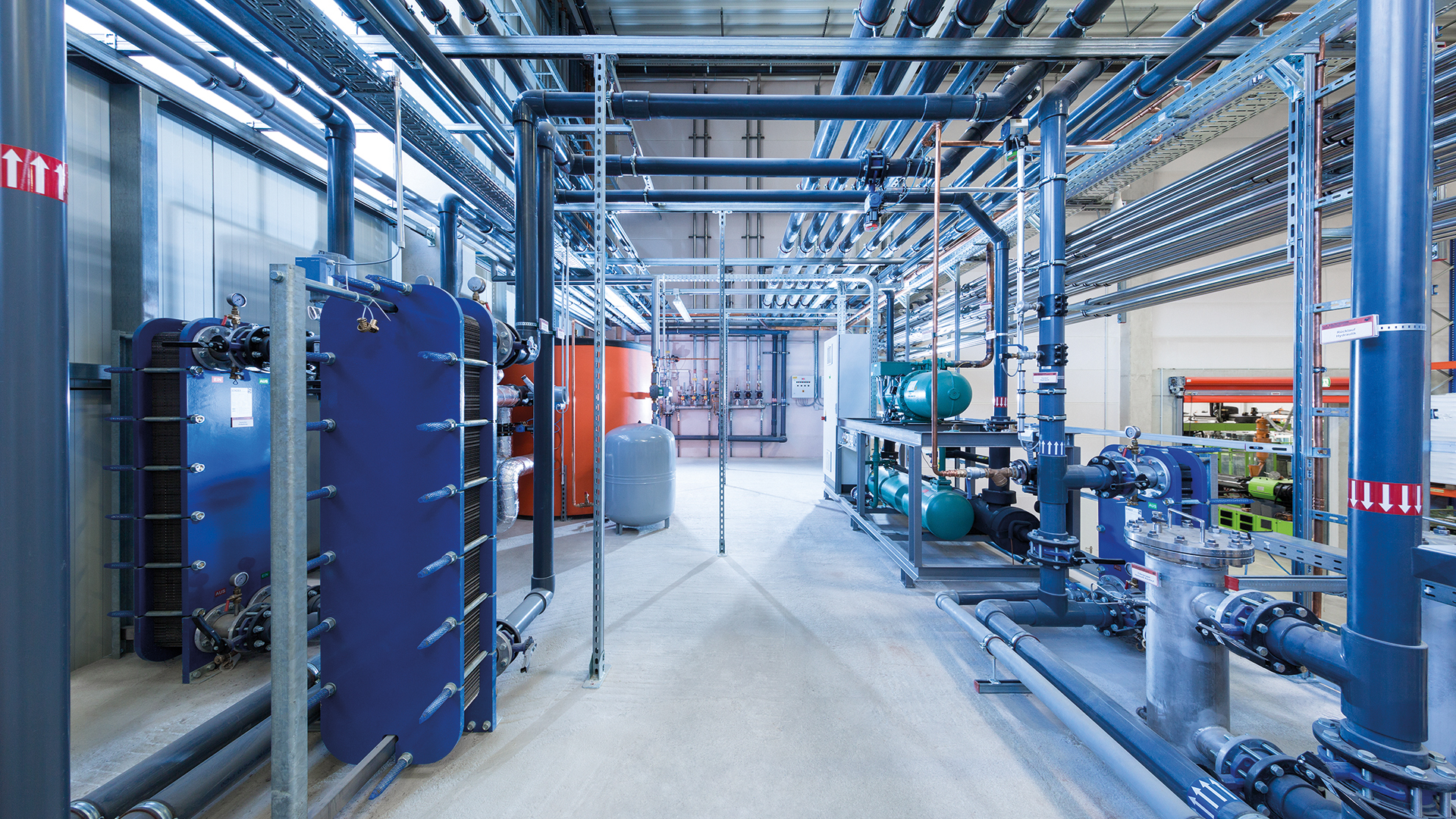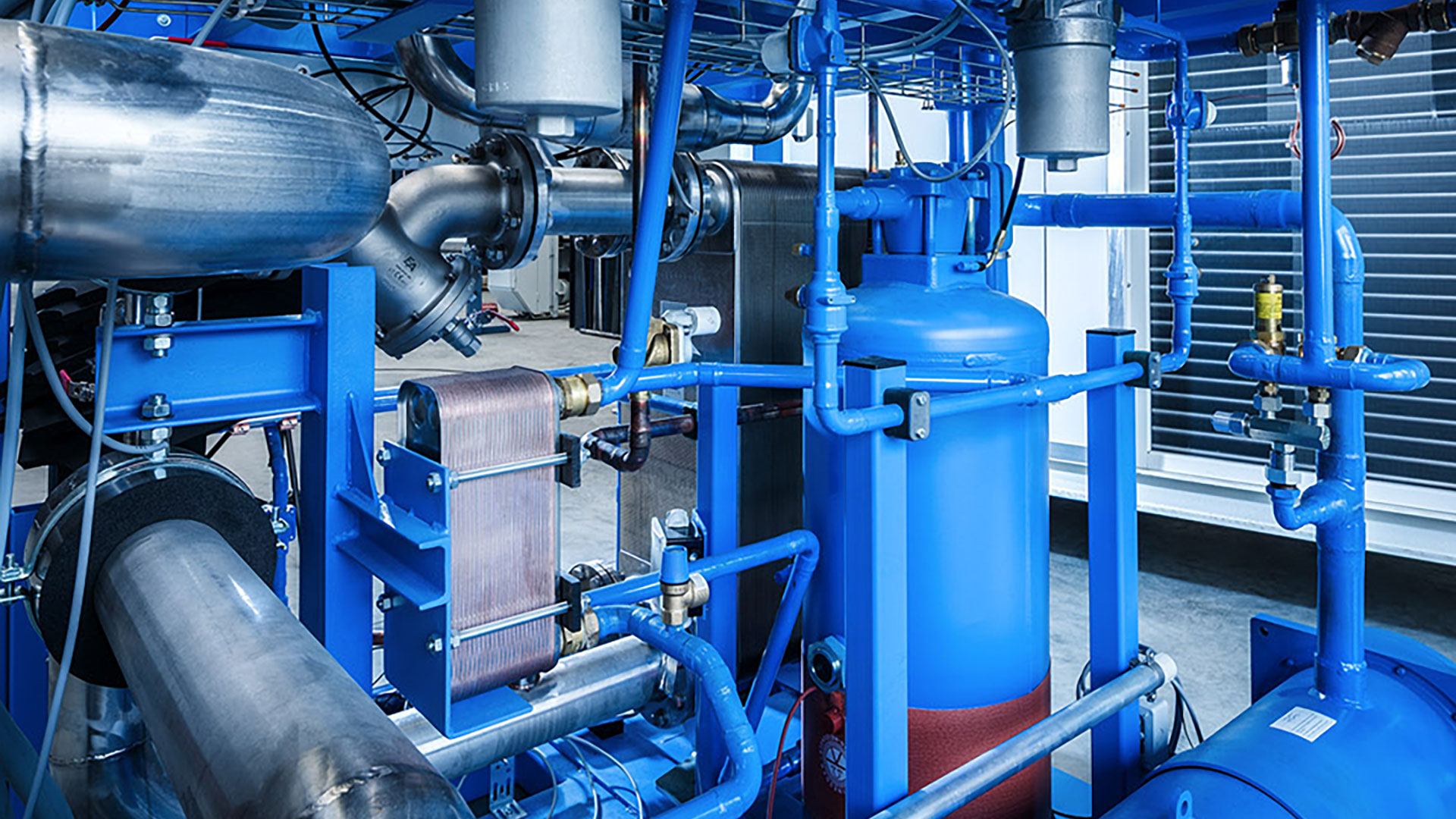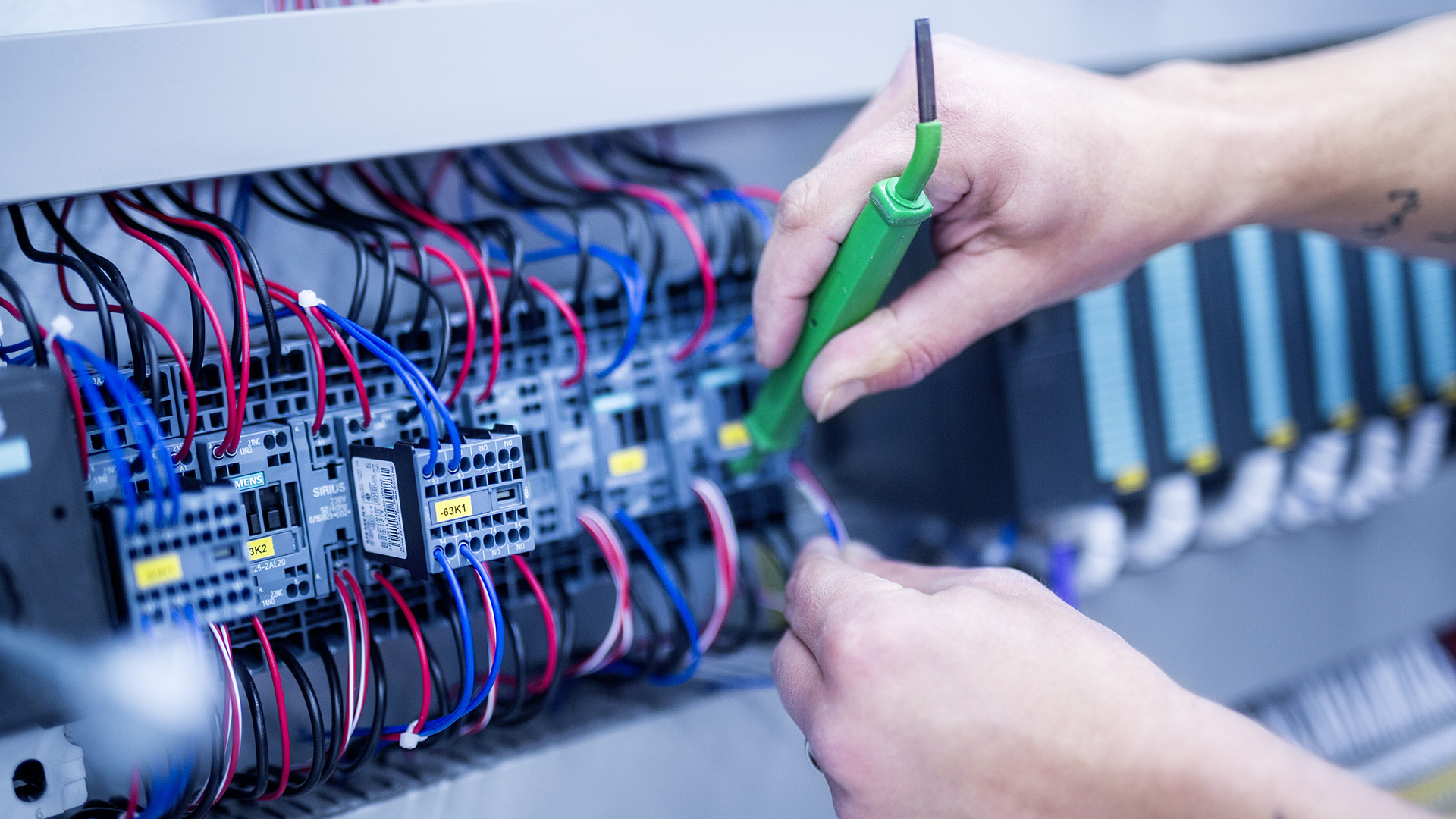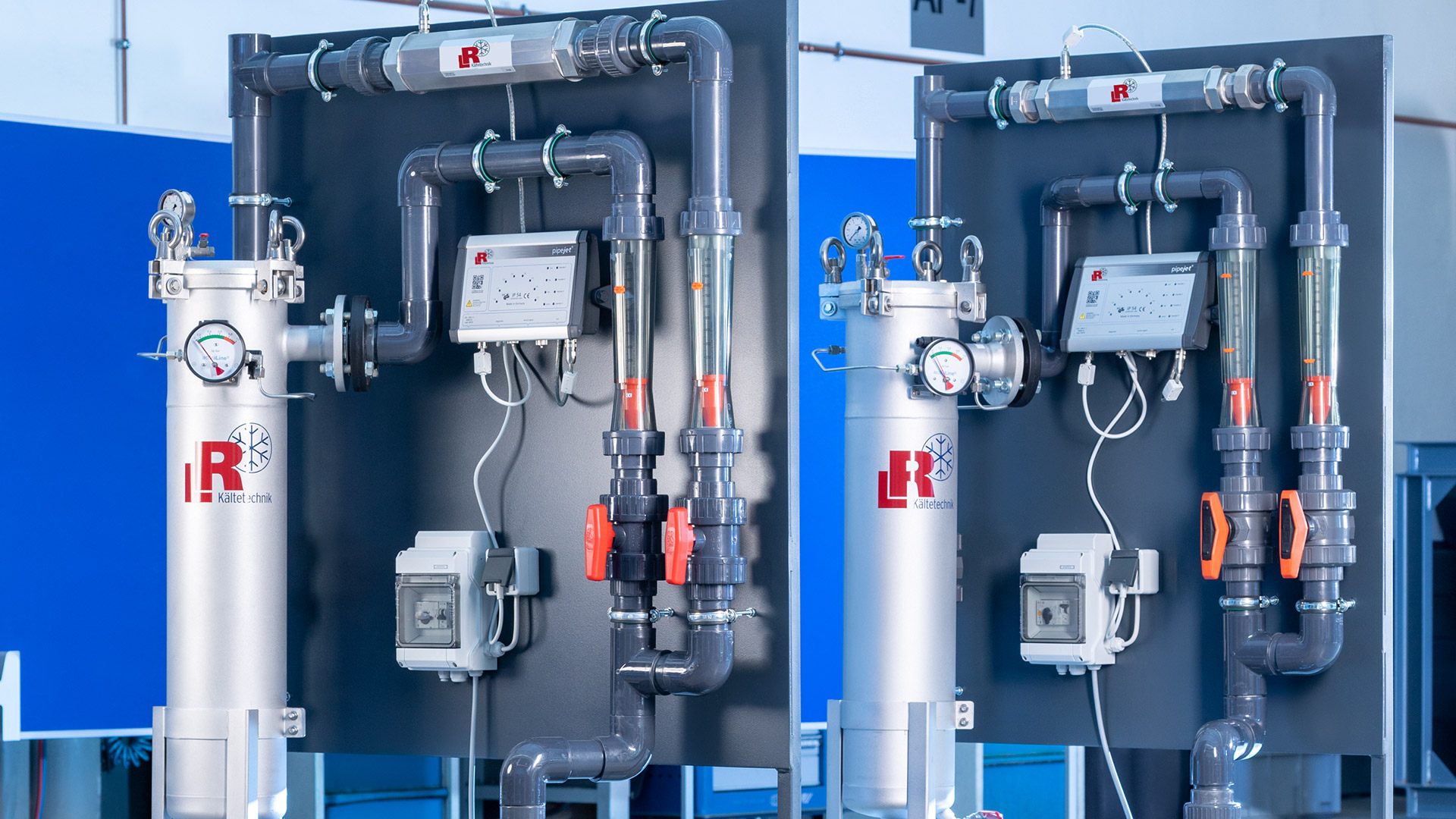Cooling tower systems
Cooling tower systems
Cooling by cooling towers relies on the evaporation effect, which facilitates cooling of water below the outside temperature.
The pump-tank unit and water treatment systems for the cooling tower are installed indoors. We produce these systems with cooling capacities of up to 2,000 kW, which can be expanded by modules.
Cooling tower systems are produced in radial or axial design. The cooling tower can be made from stainless steel, plastic or plastic-coated steel, according to the customer’s requirements. We supply the cooling towers in single-cell or multi-cell design. The system is constructed according to the customer’s requirements.
Do you need advice or do you have a question? Just send us an
Numerous options
for Cooling tower systems
HEAT EXCHANGER
The demand-oriented design for a system concept is also an important point for heat exchangers, especially since transmission losses occur here that must be kept low. What transmission area is available? What is the heat transfer loss between the plates? Heat exchangers are required in order to separate the system, e.g. to prevent impurities or hazardous substances from entering the system.
WATER TREATMENT
Depending on the water quality and operating conditions, the use of special water additives is necessary to prevent deposits, corrosion and contamination. Corrosion inhibitors are added to keep corrosion rates low. The range on offer takes into account the materials, water quality and operating conditions. Combination products with a cleaning effect are often used to keep surfaces clean at the same time. Hardness stabilisers and dispersants can prevent new deposits and remove existing ones. In this case, having the appropriate filter technology is a prerequisite. The correct dosage is provided by quantity-controlled dosing pumps, depending on the level of water consumption. The use of broad-spectrum biocides is necessary to prevent system germination. Germs can attack materials, clog heat exchangers with slime and change the water quality. Regular doses prevent this.
MHP – HYDROPHYSICAL WATER TREATMENT
Protects the system against impurities and blockages in the heat exchanger channels.
Reduces deposits of biological matter.
Stainless steel strainer basket filters with bypass for cleaning during operation.
PUMP-TANK SYSTEM
Avoid harmful, short compressor running times in chillers by using a sufficiently large tank.
Partition walls serve to avoid mixing temperatures.
Stable temperatures due to large buffer tanks.
Optimum output conditions for pumps.
Flexible retrofitting of pumps and water technology.
SAND FILTER
Removal of solids is important for high
operational safety and proper water quality.
All larger particles (200 µm) in the main stream are removed with a sieve cloth to protect plant components.
Monitoring and a bypass circuit are important here. In a separate side stream, on the other hand, even the finest solids (5 µm) should be continuously removed, e.g. with a filter cartridge or a sand filter. Otherwise, this could lead to silting or deterioration of water additives. Depending on the design, automatic cleaning of the filter by backwashing is possible.
PIPING
Piping must be of sufficient dimensions to prevent losses.
Minimum pressure rating of 16 bars.
Optimum flexibility and clarity
Various materials for the respective application (CU, SS, PVC, PP, PE)
Optimum insulation to avoid temperature fluctuations
SOFTENING
If the make-up water contains too much lime, or lime deposits are to be expected due to the operating conditions (high temperatures, evaporation), softening of the make-up water is necessary. Occasionally, under particularly critical conditions, complete desalination of the make-up water is required.
To soften the make-up water, ion exchangers are used, which exchange the calcium and magnesium ions that form deposits for sodium ions. If the exchange capacity is exhausted, the ion exchanger is regenerated with a saline solution and becomes available again. The regeneration process is fully automatic.
With softened water, lime scale deposits can no longer occur. Softened water cannot build up natural corrosion protection due to its lack of hardness; depending on the material, the use of a corrosion protection agent is then required.
PUMPS
The consumer pumps on our refrigeration systems are equipped with pressure-dependent, speed-controlled drives. This reduces the energy consumption of the pumps by up to 40%.
Pumps from the L&R ECOPRO efficiency range are also speed-controlled and, in the case of the KSB pump, are equipped with SuPremE drives. The combination of synchronous reluctance motors and frequency converters allows high energy savings, especially during partial load operation.
WINTER RELIEF
“Winter relief” can be used whenever the outside temperature is lower than the required process temperature. In this scenario, outside air is used for cooling. A free cooling unit used for this purpose can also be used in summer, e.g. in plastics plants, to provide additional cooling for the hydraulic circuit.
FILTER TECHNOLOGY
Stainless steel strainer basket filters with bypass for cleaning during operation.
Protects the system against impurities and blockages in the heat exchanger channels. Reduces deposits of biological matter.
Your contact partner for
cooling tower systems made in Germany
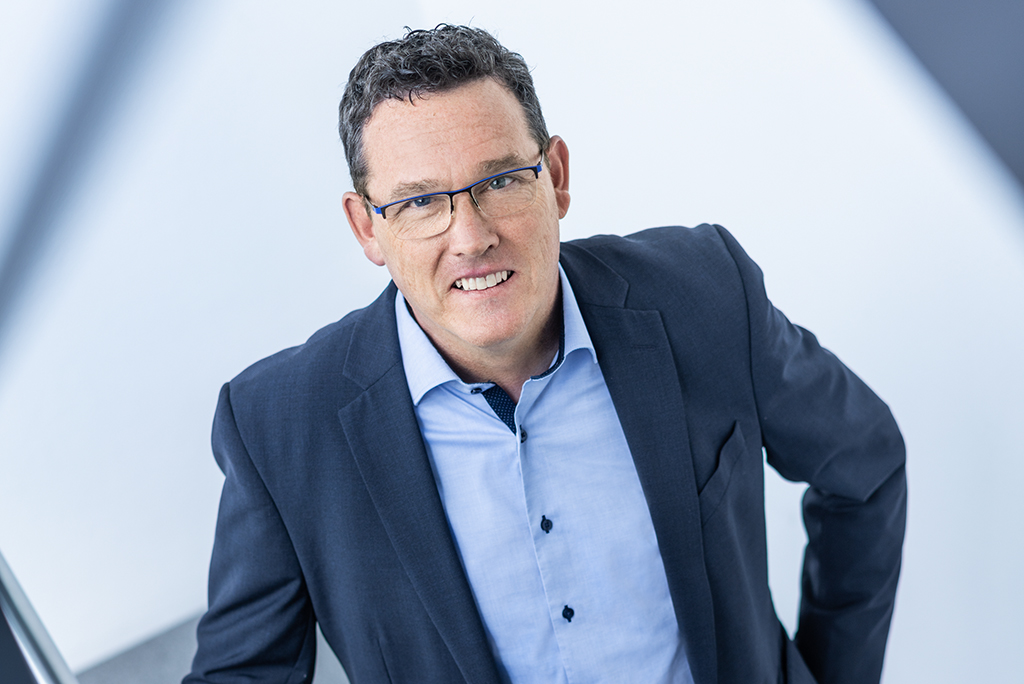
THOMAS IMENKÄMPER
Management (CSO)
Phone +49 2935 965-20
t.imenkaemper@lr-kaelte.de
Postcode areas (Germany) 01-04, 06-10, 12-19, 32, 33, 39-42, 44-49, 58, 59, 95, 96, 98-99
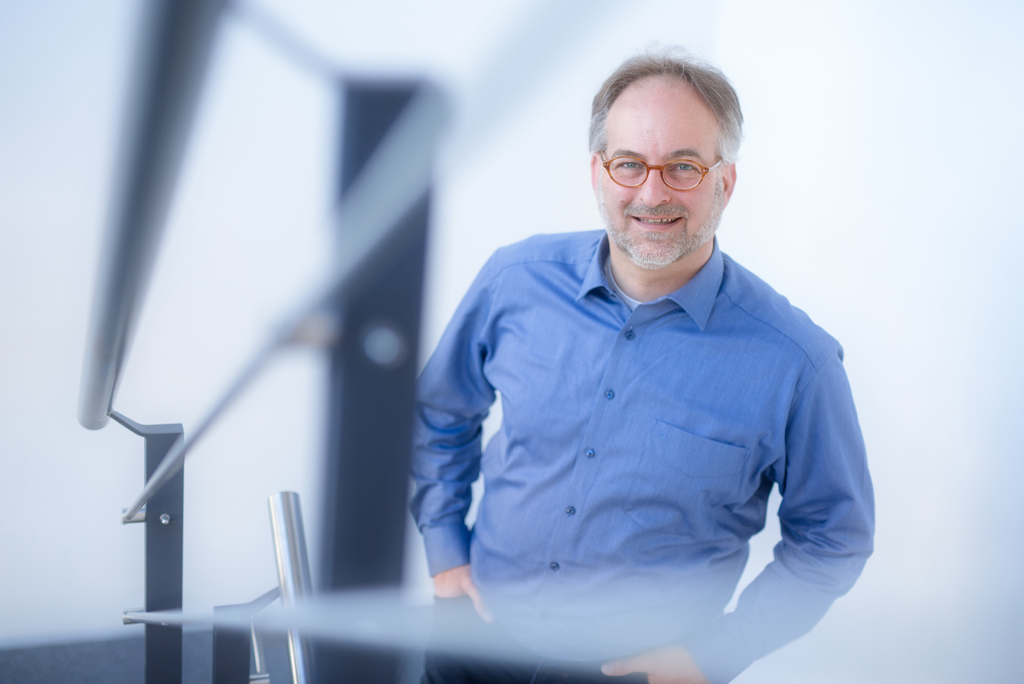
GEORG HESSE
SALES
Phone +49 2935 9652-203
g.hesse@lr-kaelte.de
Postcode areas (Germany) 34, 35, 50-56
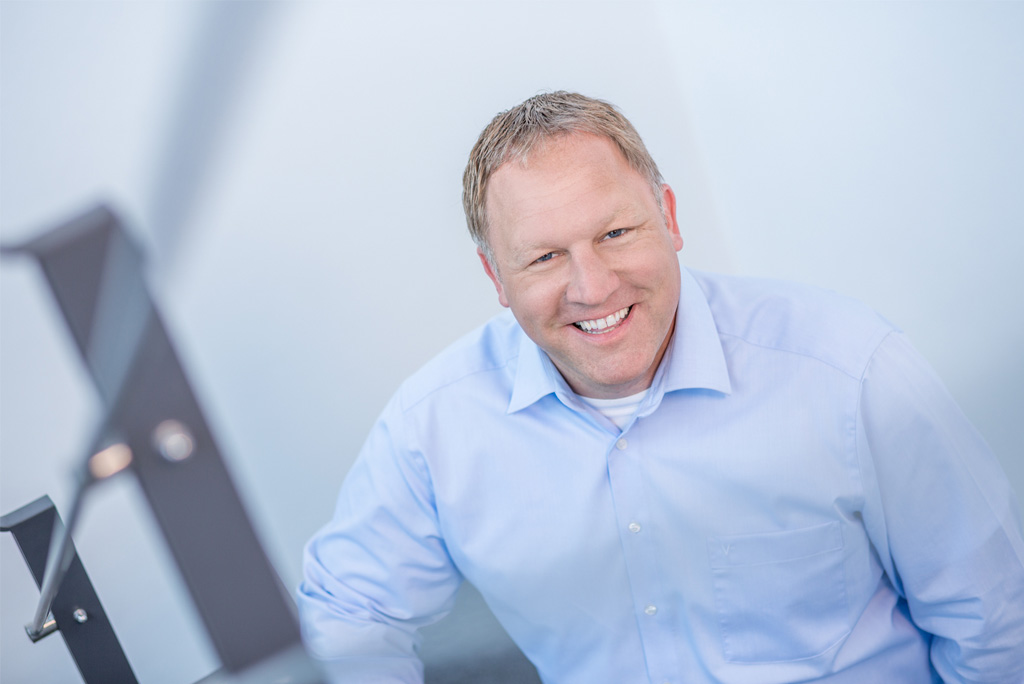
MICHAEL FRYE
SALES
Phone +49 2935 9652-209
m.frye@lr-kaelte.de
Postcode areas (Germany) 20-31, 37, 38
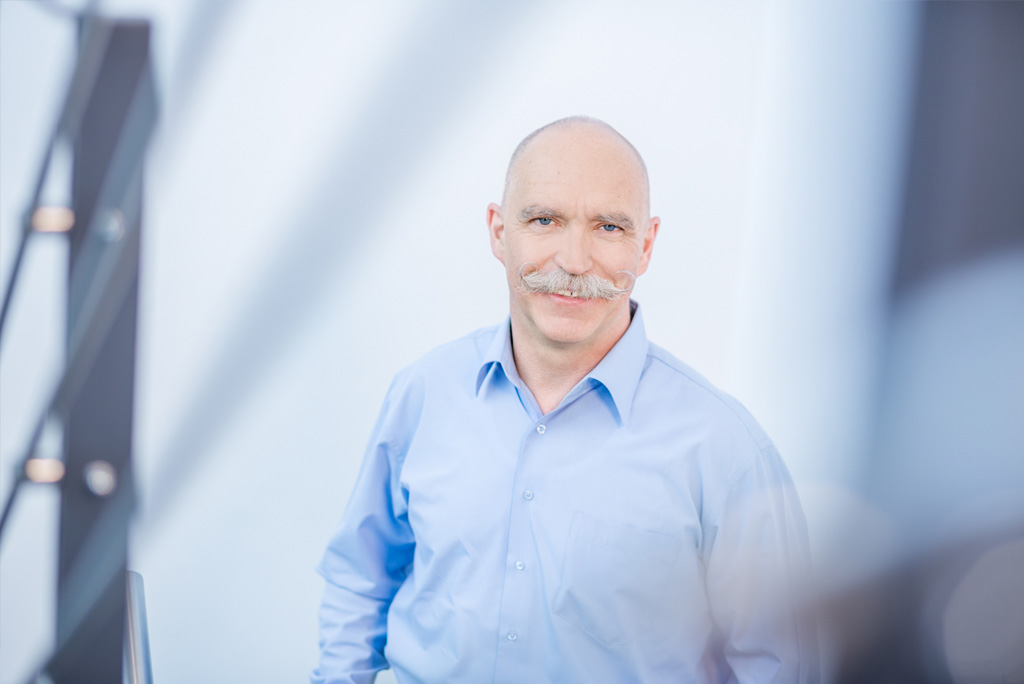
FRANK WÖLL
SALES OFFICE FRANKFURT
Phone +49 2935 9652 205
f.woell@lr-kaelte.de
Postcode areas (Germany) 36, 60, 61, 63, 64-94
